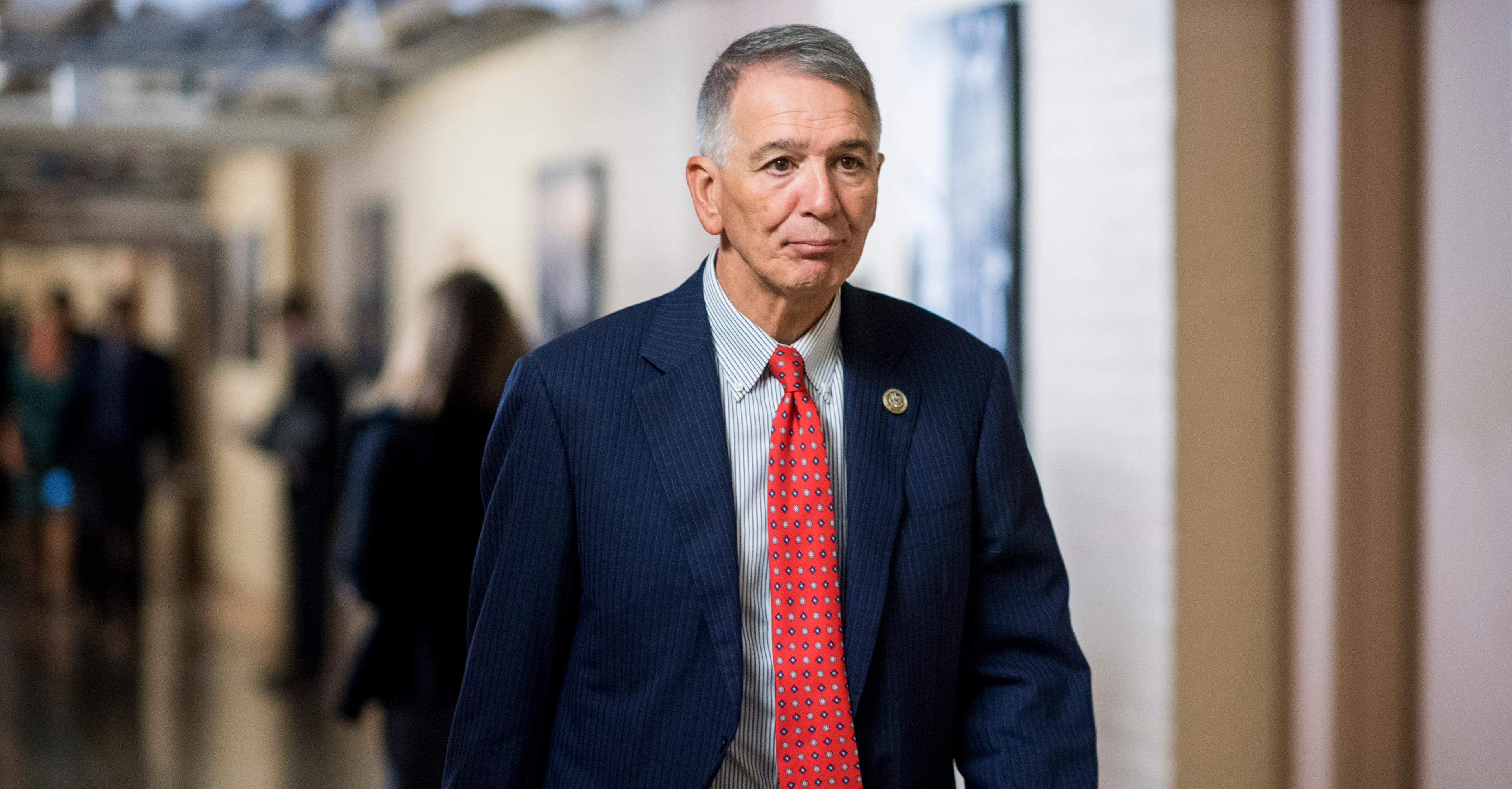We cut child poverty to historic lows, then let it rebound faster than ever before
How the expanded child tax credit — not a strong economy — slashed child poverty rates and why we need to bring it back.


During the past two years, child poverty in America set new records — one for the better and one for the worse.
In 2021, the child poverty rate — as measured by the supplemental poverty measure that incorporates the value of government benefits — took a sharp drop to its lowest point on record: 5.2 percent, so that 3.8 million American children were living below the federal poverty line. Then, as a report just released by the Census Bureau found, it experienced the steepest rise in its history in 2022: a hike of 139 percent, or more than double, to 12.4 percent. Five million kids fell back into poverty, pushing the number of kids whose parents were struggling to meet their basic needs up to 9 million.
To anyone following the politics of poverty in America, the jagged rebound was entirely unsurprising. The child poverty rate was like a loaded spring being held down by pandemic-era welfare programs. Chief among them: the child allowance, which expanded on the existing child tax credit (CTC) and sent monthly payments to all parents in poverty, helping to cut child poverty by 46 percent in 2021. Release the spring — or let the expanded CTC expire, as Congress did — and of course it will shoot right back up. The child poverty rates settled right back around pre-pandemic 2019 levels.
:no_upscale()/cdn.vox-cdn.com/uploads/chorus_asset/file/24939567/Final_child_poverty.png)
The main innovation of the expanded child allowance in 2021 was to do away with the income requirements that kept full CTC benefits from reaching 19 million of the poorest American children whose parents had little or no earnings. When the expansion reverted back to the old CTC at the end of 2021, all those families who had received the benefit were once again excluded by the income requirements.
Which is what makes this frustrating: policymakers saw this coming, watched it happen, and were able to do nothing about it. It wasn’t for lack of effort: Sen. Joe Manchin (D-WV) was the swing vote that blocked the rest of the Democratic Party’s effort to make the program permanent, on the empirically refuted idea that unconditional cash to low-income families will get spent on drugs. The data shows that for the year the program was in effect, parents spent most of the money on food, clothes, utilities, rent, and education costs.
But politics aside, the fact that child poverty rebounded so sharply even while the economy is doing really well — even though inflation hasn’t completely settled down, wage growth at the bottom has been outpacing it since June, and unemployment is historically low — holds an important lesson. No matter how well the economy performs, generous welfare programs that reach everyone in need are our most effective tool against poverty.
A strong economy remains weak on child poverty, apparently
For months, the economy has been surprisingly strong by many measures. The last time unemployment remained this low was the 1960s. Real median household income is fluttering around its highest peak on record. The wage inequality that widened over the past few decades is shrinking. Black Americans — who continue to suffer the legacy of being cut out from economic gains — are also seeing big upswings in earnings, and historically low jobless rates. The economy continues its streak of creating jobs. And so on. “Things are going great, I swear,” Annie Lowrey writes in the Atlantic, already hinting at the dissonance between statistics telling of a strong economy and the reality of both high inflation eating away at those earnings and 5 million kids plunging back into poverty.
The economy is strong, including and especially for low-income workers, but when Congress failed to extend the expanded CTC, none of that mattered — and child poverty surged back. To be fair, there’s probably a lag to be expected between an economy flexing its muscles and downstream benefits to things like child poverty. Historically, a stronger economy that translates to lower levels of unemployment and wage growth for lower-income workers has played a significant part in bringing down child poverty. That describes a lot of what the US has experienced over the past couple of years, and maybe, if the economy stays strong, we’ll see reductions in the child poverty rate in a few years, or more. But when you have a program as effective as the expanded CTC was, why wait to find out?
One reason that’s held some sway for decades is the idea that the long-run economic harms of unconditional cash transfers — or no-strings-attached payments like the expanded CTC, or universal basic income — would erase any short-term benefits (like huge drops in child poverty). The concern is that giving out money to people in poverty without requiring them to work in exchange will ultimately create communities where dropping out of work is both widespread and accepted. Cash with no strings attached “gives up on work,” as one conservative analyst put it.
While there have always been disagreements about that view, increasingly, the evidence is against it. Unconditional cash transfers in low-income countries have been found to stimulate economic activity. In a pilot program for guaranteed income in Stockton, California, recipients of unconditional cash were quicker to find full-time employment than control groups.
Looking specifically at the impacts of the expanded CTC, there was no evidence that receiving the benefit reduced work, and economists at Columbia University estimated that making the program permanent would deliver a more than tenfold return on the investment of about $100 billion per year — a major boost to the economy. That means in addition to solidifying the massive drop in child poverty and giving millions of struggling American families continued support to pay for food, school supplies, utilities, and rent, taxpayers would also save money in the long run.
States are stepping up, but that’s no replacement for a federal program
In the absence of federal action, states are stepping in. Since the expanded CTC expired at the end of 2021, 11 states have passed their own versions, each without the income requirements that kept benefits from the poorest Americans. For these “fully refundable” CTCs, even families with $0 in earnings receive benefits.
Under the conventional CTC, which was “partially refundable,” households needed to earn a minimum of $2,500 per year to receive any benefit — a barrier that effectively screened out unemployed people. After that threshold, even if a family did not owe any income tax (the CTC is a tax credit, which is usually deducted from taxes owed), they could still receive a portion of the CTC benefit as a partial refund on the expenses of raising children. (A non-refundable credit would mean that if you do not earn enough to owe any income taxes, you wouldn’t receive any benefit.)
Now, fully refundable CTCs that reach all Americans in poverty — not just those who already have some earnings — are passing in states with Democratic majorities, though plenty of Republicans are on board with the idea as well. An analysis in July by the Jain Family Institute (JFI), a nonpartisan think tank, found that 40 percent of Republican state senators voted for fully refundable child tax credits. A September poll by Hart Research and the Economic Security Project found that 60 percent of Republican voters support a fully refundable CTC.
While each of these state CTCs are fully refundable, the rest of their policy designs are varied. Benefit amounts range from $180 to $1,750 per child. Some are designed to reach only low-income families by starting to phase out benefits at low levels of income (Maryland, for example, immediately phases out all benefits after $15,000 of annual household income), while others stretch into the middle class before phasing out. Still others (like in Massachusetts) go universally to all families with children younger than 12 regardless of income levels.
At best, though, state programs are a stopgap in the absence of a federal child allowance. The main reason is funding: states face tighter constraints than the federal government, and wind up financing smaller benefits as a result. Even the largest state CTC, in Minnesota, offers only $1,750 per child, about half of what the expanded CTC did.
“Put simply,” said Jack Landry, a researcher at JFI, “the federal government has more fiscal firepower to pass a truly transformative child tax credit.” Relying on states to fund CTCs means those state governments with bigger tax bases could afford better programs, while poorer ones could be left with comparatively meager benefits. “A federal CTC that raises taxes from all 50 states and then distributes them without regard to geography is more equitable than every state financing a CTC on its own,” he said.
Child poverty does not have to be normal
The past two years of child poverty shocks — a 46 percent drop, a 139 percent rise — were significant departures from the prior 50 years. Just as economists talk of there being a balance in the economy that produces a “natural rate of unemployment,” the decades since the US official poverty measures began in 1967 show what looks like a natural rate in the decline of child poverty. It rarely budges more than 1 percent per year.
Economic booms and busts can nudge the annual rate a little higher or lower, which raises further concerns in the absence of strong programs like the expanded CTC. Some economists still warn of a lurking recession, which would raise the prospect of a double bind in our future: a slouching economy, and less effective protections against child poverty. That rates rebounded so sharply even during historically excellent economic conditions shows that the economy, on its own, can only do so much.
When we talk about child poverty, we’re talking about parents being unsure whether they’ll be able to keep up with their utility bills enough for their kids to take a bath, or afford a backpack for school, or whether they’ll be able to feed them enough to keep them healthy. Since the expanded CTC ran out, Megan Sandel, a pediatrician, told NPR that she’s already seeing 3-year-old children lose weight because their parents can’t afford to feed them enough.
But as the short-lived success of the expanded CTC showed, federal welfare programs — when they include all children in poverty, not just the working poor — can almost immediately forge a new normal in the level of child poverty, no matter what’s going on in the wider economy. With all the abstract talk around pandemic-inspired “new normals,” cost-effectively cutting child poverty in half is a pretty decent pillar worth moving toward, and may even help build momentum to simply ending it altogether.

ModRetro recreated the N64 controller for its M64 console
- 17 گھنٹے قبل

OpenAI denies liability in teen suicide lawsuit, cites ‘misuse’ of ChatGPT
- 17 گھنٹے قبل

Top 5 of CFP unchanged; Ducks leapfrog Ole Miss
- 16 گھنٹے قبل

Westminster International School hosts vibrant food festival celebrating cultural diversity and charity
- 7 گھنٹے قبل

The CDC’s troubling new second in command, briefly explained
- 15 گھنٹے قبل

Sources: Vanderbilt's Lea lands 6-year extension
- 16 گھنٹے قبل

Notification for CDF’s appointment to be issued in due course of time: Khawaja Asif
- 4 گھنٹے قبل

The Super Mario Galaxy bundle for the Switch is 20 percent off today only
- 8 گھنٹے قبل

Sources: AD (calf) returning to Mavs vs. Lakers
- 5 گھنٹے قبل

FC Headquarters Suicide Blast: All three attackers confirmed to be Afghan nationals
- 7 گھنٹے قبل

Are Chelsea really title contenders? Arsenal clash will give us an answer
- 16 گھنٹے قبل

Pakistan, Egypt vow to deepen cooperation in various sectors, including defense
- 7 گھنٹے قبل









